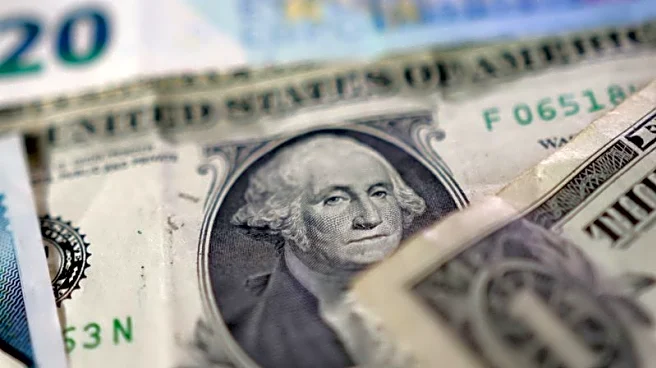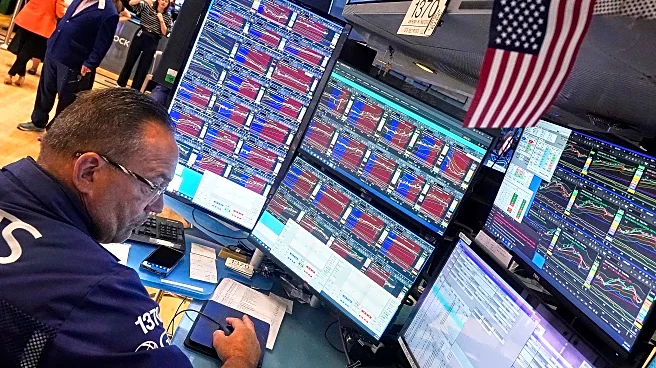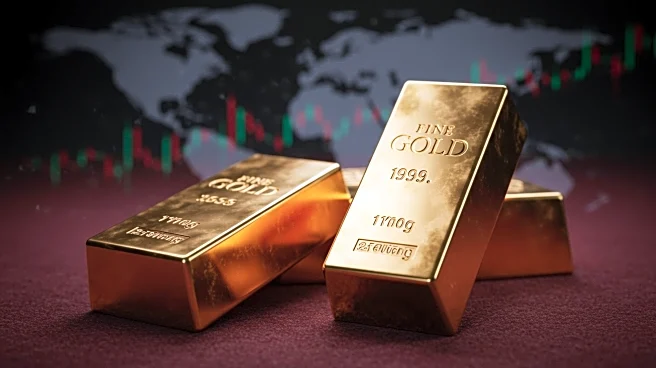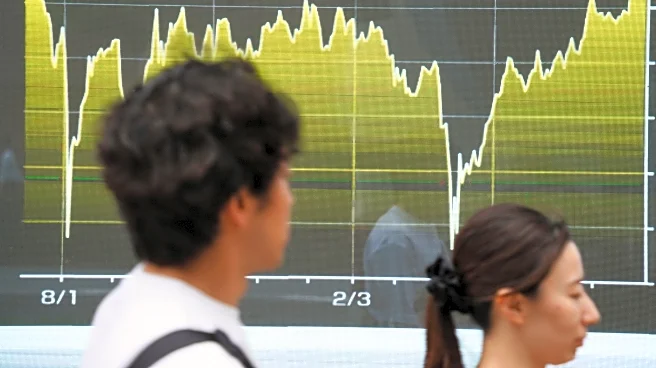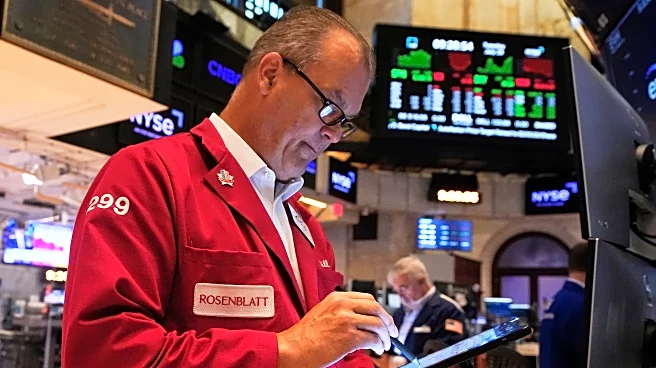What is the story about?
What's Happening?
In 2025, the U.S. Federal Reserve's cautious monetary policy has created a favorable environment for gold investors. With the federal funds rate maintained at 4.25%-4.50% and inflation above 2%, the market anticipates a gradual shift towards rate cuts. Gold prices have surged to record highs, reaching $3,500 per ounce in April 2025. Recent volatility, driven by unexpected July PPI data and mixed signals from Fed officials, presents a tactical entry point for investors looking to adjust portfolios ahead of potential rate cuts. Central banks have significantly increased gold purchases, with global acquisitions exceeding 900 tonnes, including China's 120 tonnes, reflecting a strategic move towards de-dollarization.
Why It's Important?
Gold's strategic allure is underscored by its inverse relationship with real interest rates, which are nearing zero, reducing the opportunity cost of holding non-yielding assets. The anticipation of rate cuts has already influenced market expectations, weakening the dollar and lowering yields, thus supporting gold prices. Geopolitical tensions, such as U.S.-China trade disputes and the Israel-Gaza conflict, further enhance gold's role as a safe-haven asset. The World Gold Council reports that gold gains approximately 1.6% weekly during geopolitical risk spikes, offering long-term investors a hedge against systemic risks.
What's Next?
The market expects a 25-basis-point rate cut in September and another in October, with a high probability of the September cut. This scenario could further bolster gold prices. Investors are advised to maintain a diversified portfolio, balancing gold with equities, bonds, and inflation-linked assets to mitigate unexpected policy shifts or geopolitical shocks. Tactical plays using options or futures can capitalize on short-term volatility, while satellite exposure to gold miners offers leveraged gains but requires caution due to operational risks.
Beyond the Headlines
The strategic shift towards de-dollarization by central banks, particularly China, highlights a long-term trend that could impact global financial systems. This move may lead to a reevaluation of reserve assets and influence international trade dynamics. Additionally, the interplay between Fed policy and geopolitical tensions could redefine gold's role in investment portfolios, emphasizing its importance as a hedge against inflation and policy missteps.
AI Generated Content
Do you find this article useful?


